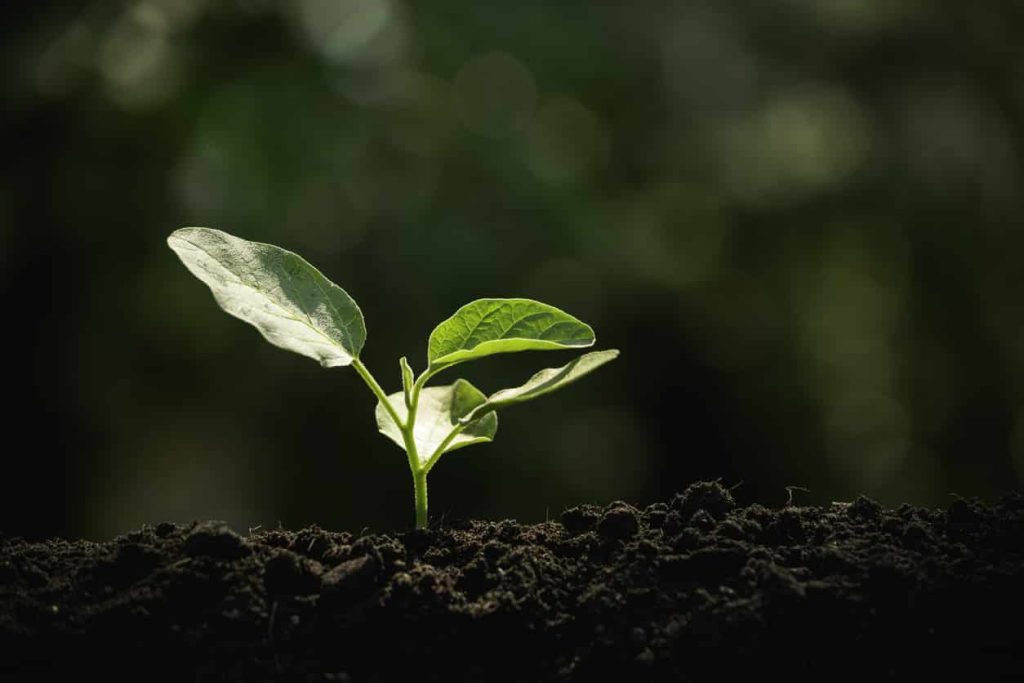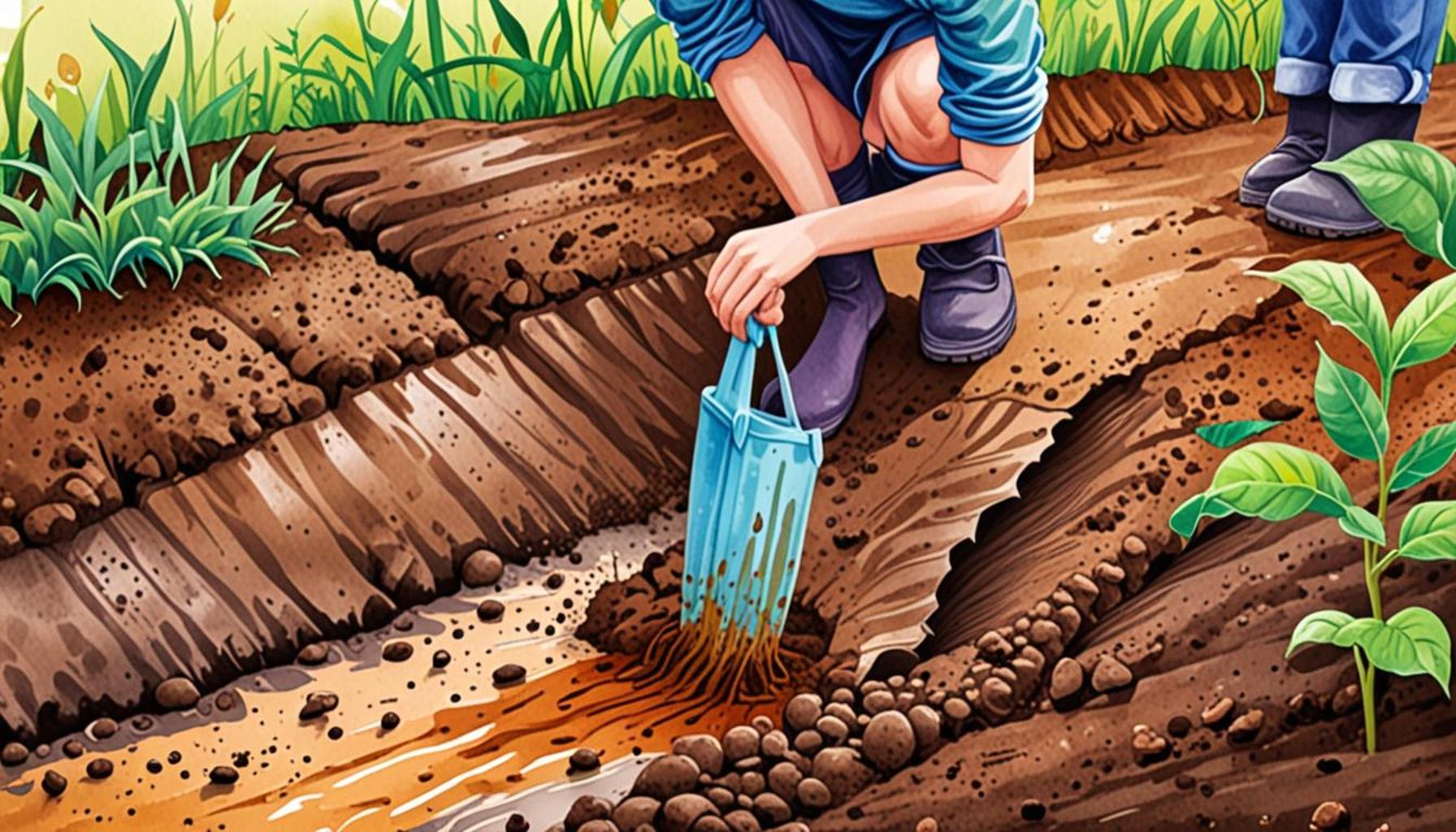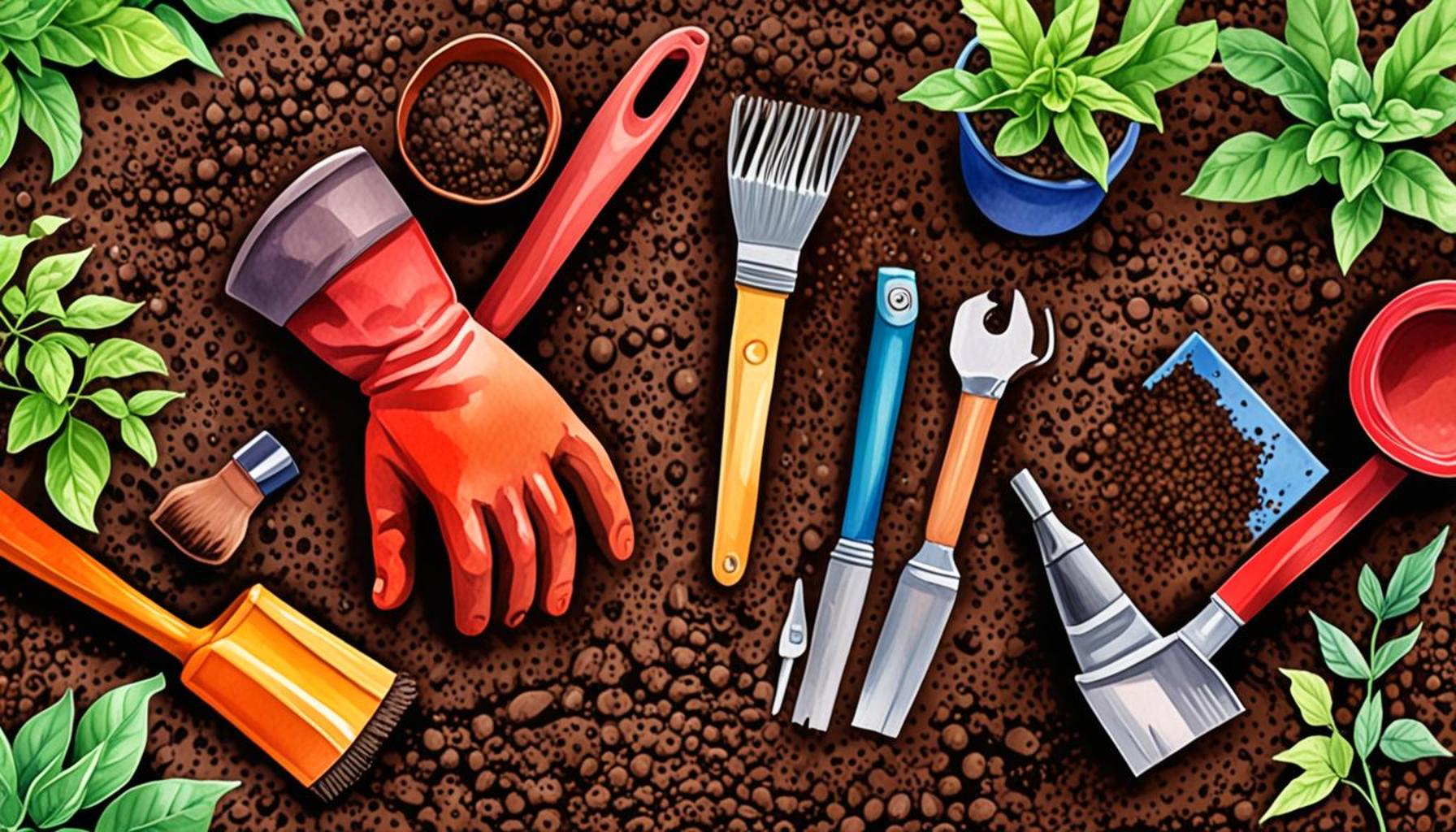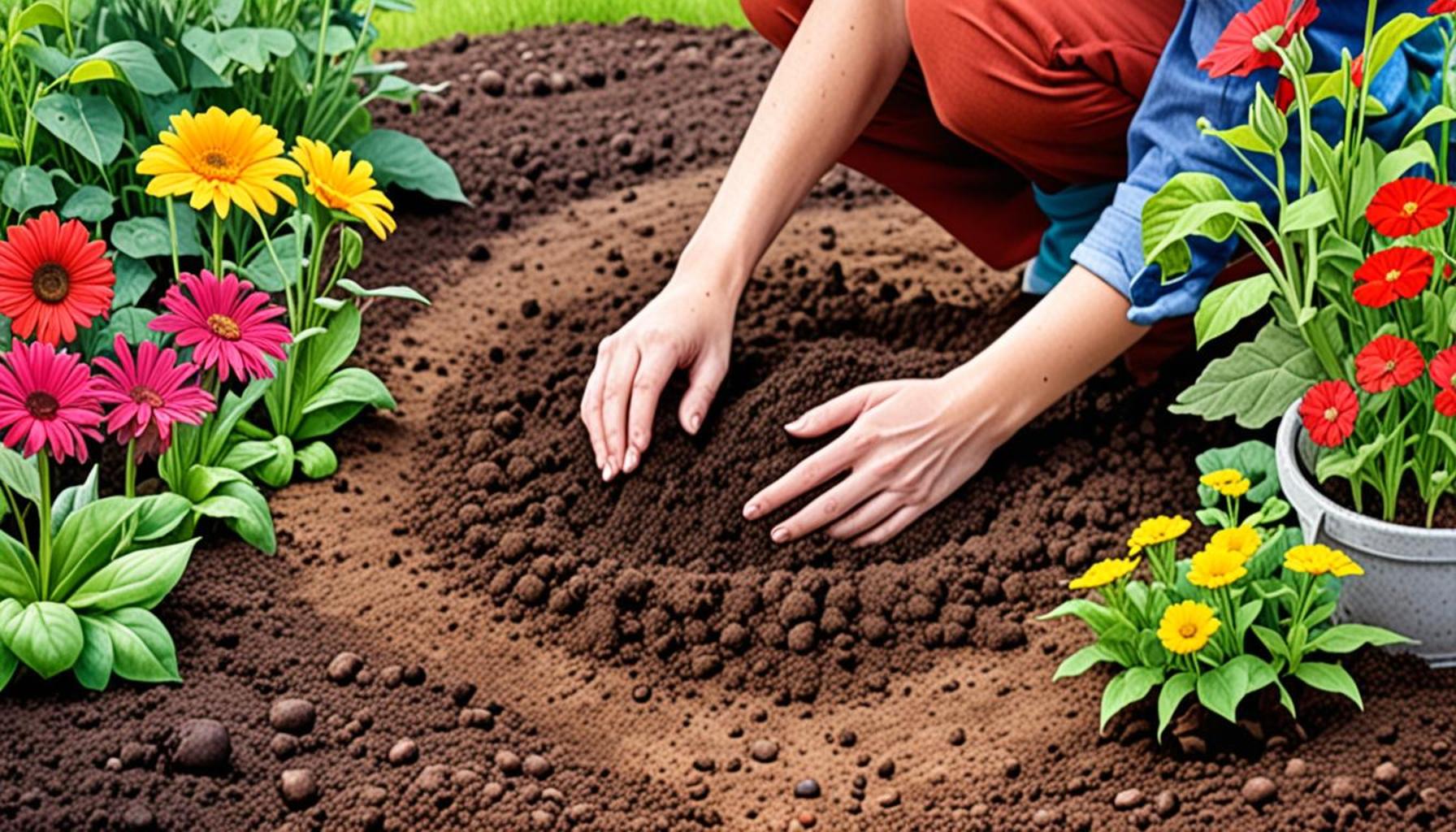How to Test and Improve Soil Quality Before Planting

Understanding Soil Quality
Before diving into your gardening or farming endeavors, assessing your soil is crucial. Soil quality affects plant growth, crop yield, and overall garden health. Without taking the time to evaluate your soil, you may be setting yourself up for challenges down the line. Healthy soil acts as a living body, not just a substrate for growing plants; it plays a fundamental role in ecosystems, supporting a rich tapestry of life from microorganisms to larger fauna.
Why Test Your Soil?
Testing your soil provides valuable insights into its composition and health. Here are some key reasons to consider:
- Nutrient Levels: Identifying essential nutrients such as nitrogen, phosphorus, and potassium is vital, as different plants require specific ratios to thrive. For instance, leafy greens like spinach thrive in nitrogen-rich soils, while root vegetables such as carrots benefit from higher potassium levels.
- pH Balance: Understanding the acidity or alkalinity of your soil is crucial, as it affects nutrient availability. Most garden plants prefer a pH level between 6.0 and 7.5. If your soil is too acidic (below 6.0), certain nutrients become locked away, rendering them unavailable to plants, while alkaline soils (above 7.5) can lead to deficiencies.
- Organic Matter Content: Measuring the organic material in your soil is essential. Organic matter enriches the soil, improves its structure, and supports microbial activity that promotes nutrient cycling and plant health. Soils rich in organic content can retain moisture better, reducing the need for frequent watering.
Simple Ways to Improve Soil Quality
Once you’ve tested your soil, you can take steps to enhance its quality. Consider these improvements:
- Adding Compost: Incorporating compost boosts organic matter and nutrient content, leading to healthier soil. Compost not only enriches the soil with nutrients but also improves aeration and drainage, creating a more hospitable environment for plants.
- Soil Amendments: Tailoring nutrients and pH level according to test results can make a substantial difference in plant growth. For example, if your soil test reveals low phosphorus levels, you might add bone meal or rock phosphate to provide an organic source of this key nutrient.
- Practicing Crop Rotation: This method prevents nutrient depletion and pest buildup. For example, rotating legumes, which fix nitrogen in the soil, with nutrient-hungry crops like corn helps maintain balanced soil fertility over time.
Armed with the right information, you’ll be able to cultivate a garden that flourishes, ensuring a bountiful and robust planting season ahead. By understanding and caring for your soil, you not only enhance your own garden’s vitality but also contribute to sustainable practices that foster healthier ecosystems. Let’s delve deeper into how to effectively test and enhance your soil quality and create the thriving landscape of your dreams!
DISCOVER MORE: Click here to attract beautiful pollinators to your garden

Effective Soil Testing Methods
To truly understand the quality of your soil, employing reliable testing methods is crucial. There are several ways to evaluate your soil, ranging from professional testing services to DIY kits. The method you choose may depend on your resources, garden size, and the specific information you seek. Below are some effective soil testing methods:
- Professional Soil Testing Services: Many cooperative extension services and agricultural universities offer professional soil testing. This comprehensive analysis provides detailed information about nutrient levels, pH balance, and organic matter content. You typically gather a soil sample and send it to the lab, where experts analyze it and send back a report with recommendations tailored to your soil’s needs.
- DIY Soil Test Kits: For those who prefer a hands-on approach, soil test kits are widely available at garden centers. These kits often contain reagents that help you gauge pH levels and nutrient content. While they may lack the depth of professional testing, they provide a quick snapshot that can guide your immediate gardening decisions.
- pH Testing Probes: If you want specific insights into your soil’s acidity, a pH testing probe is a straightforward tool. Insert the probe into the soil according to the manufacturer’s instructions, and it will give you a digital reading of the pH level. This tool is beneficial for gardeners looking to maintain precise pH levels for sensitive plants.
Indicators of Soil Health
Beyond nutrient analysis, certain indicators can give you a clearer picture of your soil’s overall health. Recognizing these clues helps in determining how to enhance your soil for optimized planting. Here are some signs to look for:
- Soil Structure: Inspect the soil’s texture—healthy soil will have a crumbly texture. If the soil is hard and compacted, it may require aeration and organic matter additions to promote better drainage and root growth.
- Color: Dark, rich soil is often a sign of high organic matter content. Conversely, pale, sandy soil may be low in nutrients and require amendments to foster a thriving ecosystem.
- Presence of Earthworms: Earthworms are excellent indicators of soil health. A population of earthworms suggests that your soil is rich in organic matter and nutrients, as they play a crucial role in soil aeration and nutrient cycling.
Understanding these factors not only helps you determine the current state of your soil but also guides your improvement strategy, empowering you to create a thriving environment for your plants. Testing methods and health indicators serve as essential tools in the quest for quality soil, preparing you for a successful planting season ahead. By closely assessing these aspects, you pave the way for a sustainable gardening experience that encourages both plant growth and ecosystem vitality.
| Aspect | Details |
|---|---|
| Soil Testing Methods | Utilizing kits or laboratories for comprehensive analysis. |
| Nutrient Enhancement | Implementing organic matter and fertilizers to boost soil vitality. |
| pH Adjustment | Correcting soil pH with lime or sulfur for optimal plant growth. |
| Water Retention Improvement | Introducing mulch or amending with peat to enhance moisture retention. |
To ensure a thriving garden, understanding the intricacies of soil quality is essential. First, selecting appropriate soil testing methods is crucial; this can include home testing kits or sending samples to a professional laboratory for detailed analysis of nutrients and contaminants. Once the testing is complete, nutrient enhancement can be implemented. This makes use of organic materials such as compost and well-rotted manure to enrich the soil. Additionally, adjusting soil pH is a fundamental step, where lime can be utilized to raise pH, or sulfur to lower it, ensuring that plants absorb nutrients effectively. Finally, enhancing water retention can lead to richer soil biodiversity and healthier plant growth. This can be achieved by adding mulch or organic amendments, both of which help maintain soil moisture and prevent erosion. Fostering the right soil environment not only leads to successful planting but also contributes to a sustainable gardening practice.
DISCOVER MORE: Click here to learn about crop rotation benefits
Strategies for Improving Soil Quality
Once your soil has been tested and analyzed, the next vital step is to improve its quality in preparation for planting. Various techniques can help rejuvenate your soil, ensuring it is rich in nutrients and provides an environment conducive to plant growth. Here are some effective strategies to enhance soil quality:
- Incorporating Organic Matter: Adding organic matter, such as compost or well-rotted manure, can dramatically improve soil structure and fertility. Organic amendments improve moisture retention, promote beneficial microbial activity, and supply essential nutrients over time. Aim for a mixture of roughly 25% to 50% organic matter relative to your total soil volume to see pronounced results.
- Utilizing Cover Crops: Planting cover crops, such as clover or rye, during the off-season can provide numerous benefits. Cover crops help prevent soil erosion, improve soil structure, and enhance nutrient levels as they decompose. Additionally, certain cover crops can fix atmospheric nitrogen, enriching your soil naturally. Incorporate them into your garden plan to maximize productivity and soil health.
- Classic Crop Rotation: Rotating your crops each year can significantly replenish soil nutrients and disrupt pest cycles. This method helps maintain biodiversity in your garden while preventing soil exhaustion. For example, following a nitrogen-heavy crop like peas with a heavy feeder like tomatoes can help maintain balance in nutrient levels.
Soil Amendments: The Right Additives
Different soils require specific amendments to achieve optimal quality. Knowing what your soil lacks will guide your decision-making process.
- Lime and Sulfur: If your soil test indicates an acidic pH (below 6.0), consider adding lime to raise the pH. Conversely, if the soil is too alkaline (above 7.0), sulfur or aluminum sulfate can help lower the pH, creating an ideal environment for most plants.
- Fertilizers: Depending on nutrient deficiencies identified in your soil test, you may need to apply fertilizers. Choose between organic options, such as fish emulsion or blood meal, and synthetic fertilizers, depending on your gardening philosophy and goals. Always follow package guidelines for application rates to avoid over-fertilizing.
- Gypsum: If your soil is heavy and clay-like, adding gypsum can improve aeration and drainage. Gypsum works by breaking up compacted soil, enhancing root penetration, and reducing surface crusting.
Maintaining Soil Health Over Time
Improving soil quality doesn’t end once you’ve planted; it requires ongoing care and vigilance. Implementing practices that foster long-term soil health is essential:
- Mulching: Applying a layer of mulch can help retain moisture, suppress weeds, and regulate soil temperature. Organic mulches, such as straw or wood chips, decompose over time, enriching the soil further.
- Minimize Soil Disturbance: Limit tilling and heavy foot traffic, which can compact soil and harm its structure. Consider adopting no-till practices, which preserve beneficial microbes and increase organic matter retention.
- Continuous Monitoring: Periodically retest your soil, especially if you notice changes in plant growth or health. By keeping tabs on soil quality, you can make adjustments as needed, ensuring a vibrant and productive garden year after year.
By applying these effective strategies and remaining attentive to your soil’s needs, you set the stage for a flourishing garden that yields bountiful harvests. With a proactive approach to improving soil quality, your plants will thrive, and you will cultivate a harmonious and sustainable ecosystem in your garden.
DISCOVER MORE: Click here to learn how to grow medicinal plants at home
Conclusion
Achieving a thriving garden begins with understanding the foundation upon which it stands: the soil. Through effective testing and careful analysis, you can identify the essential components necessary for optimum soil quality. Implementing improvement strategies, such as incorporating organic matter, utilizing cover crops, and practicing crop rotation, lays the groundwork for successful planting and sustainable growth. Furthermore, utilizing specific soil amendments can remedy deficiencies and enhance the overall health of your garden soil.
Maintaining soil health is a continuous journey, not merely a pre-planting task. By adopting practices like mulching, minimizing soil disturbance, and regularly monitoring soil conditions, you cultivate an environment that promotes robust plant development and boosts nutrient levels. Being proactive in these methods not only leads to bountiful harvests but also contributes to the ecological balance within your garden ecosystem.
With soil as the backbone of your gardening efforts, taking the time to test, improve, and maintain its quality can dramatically impact your satisfaction and success as a gardener. Dive deeper into the soil science, consult local resources for tailored advice, and embark on your gardening adventure with confidence and knowledge. Remember, good soil quality before planting paves the way for lasting growth, enriched harvests, and a healthier planet.



